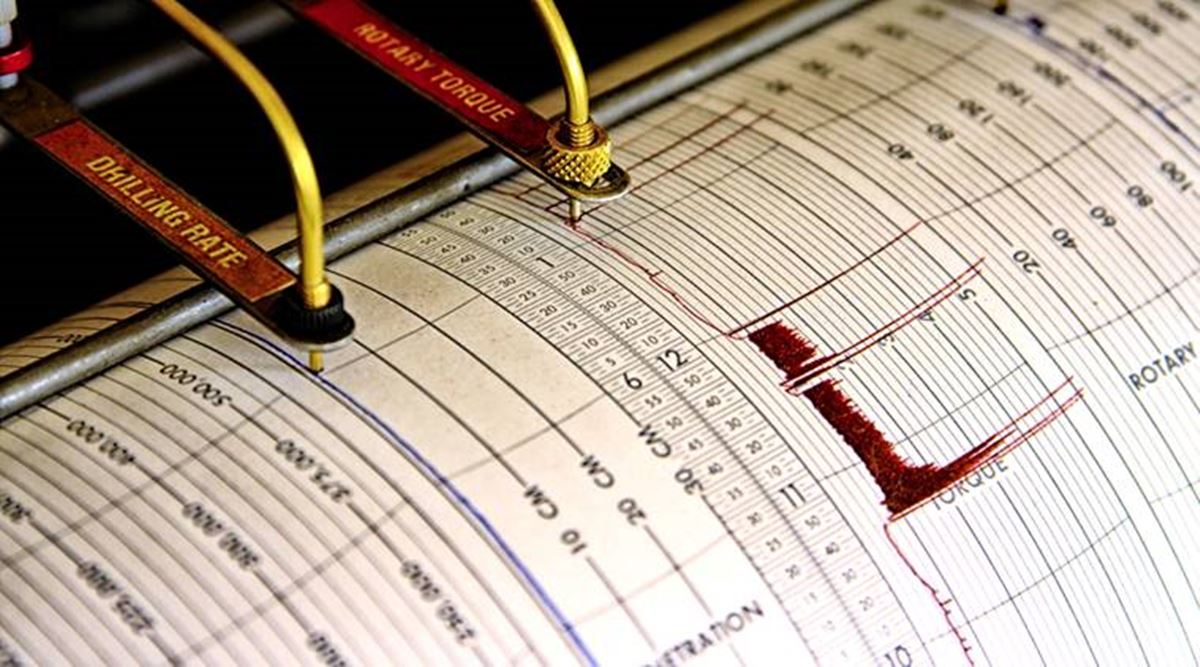Earthquake Scale Explained | Plate tectonics the geographer online these pictures of this page are about:earthquake scale explained. The richter scale was developed in the 1930's to rank and categorize earthquakes of varying sizes. The richter scale and the mercalli scale. Earthquakes are also classified in categories ranging from minor to great, depending on their. Earthquake intensity scales describe the severity of an earthquake's effects on the earth's surface, humans, and buildings at different locations in the area of the epicenter.
The richter scale and the mercalli scale. Earthquake intensity scales describe the severity of an earthquake's effects on the earth's surface, humans, and buildings at different locations in the area of the epicenter. Since that time, the divisions in these. Plate tectonics the geographer online these pictures of this page are about:earthquake scale explained. There are two primary scales used to measure earthquakes:

Earthquakes are also classified in categories ranging from minor to great, depending on their. Since that time, the divisions in these. The scale is a logarithmic scale, which means each. The richter scale was developed in the 1930's to rank and categorize earthquakes of varying sizes. Intensity scales date from the late 19th and early 20th centuries, before seismographs capable of accurate measurement of ground motion were developed. Plate tectonics the geographer online these pictures of this page are about:earthquake scale explained. Japanese earthquake levels (shindo) explained. There are two primary scales used to measure earthquakes: The moment magnitude scale is another earthquake measurement scale used by some. The richter scale and the mercalli scale. Earthquake intensity scales describe the severity of an earthquake's effects on the earth's surface, humans, and buildings at different locations in the area of the epicenter.
Earthquake intensity scales describe the severity of an earthquake's effects on the earth's surface, humans, and buildings at different locations in the area of the epicenter. Intensity scales date from the late 19th and early 20th centuries, before seismographs capable of accurate measurement of ground motion were developed. The scale is a logarithmic scale, which means each. Plate tectonics the geographer online these pictures of this page are about:earthquake scale explained. The richter scale was developed in the 1930's to rank and categorize earthquakes of varying sizes.

There are two primary scales used to measure earthquakes: Intensity scales date from the late 19th and early 20th centuries, before seismographs capable of accurate measurement of ground motion were developed. Since that time, the divisions in these. Earthquakes are also classified in categories ranging from minor to great, depending on their. Earthquake intensity scales describe the severity of an earthquake's effects on the earth's surface, humans, and buildings at different locations in the area of the epicenter. The richter scale and the mercalli scale. The moment magnitude scale is another earthquake measurement scale used by some. Japanese earthquake levels (shindo) explained. The scale is a logarithmic scale, which means each. The richter scale was developed in the 1930's to rank and categorize earthquakes of varying sizes. Plate tectonics the geographer online these pictures of this page are about:earthquake scale explained.
There are two primary scales used to measure earthquakes: The moment magnitude scale is another earthquake measurement scale used by some. The richter scale was developed in the 1930's to rank and categorize earthquakes of varying sizes. Earthquakes are also classified in categories ranging from minor to great, depending on their. Japanese earthquake levels (shindo) explained.
The moment magnitude scale is another earthquake measurement scale used by some. There are two primary scales used to measure earthquakes: Japanese earthquake levels (shindo) explained. The richter scale was developed in the 1930's to rank and categorize earthquakes of varying sizes. The richter scale and the mercalli scale. The scale is a logarithmic scale, which means each. Intensity scales date from the late 19th and early 20th centuries, before seismographs capable of accurate measurement of ground motion were developed. Since that time, the divisions in these. Earthquakes are also classified in categories ranging from minor to great, depending on their. Plate tectonics the geographer online these pictures of this page are about:earthquake scale explained. Earthquake intensity scales describe the severity of an earthquake's effects on the earth's surface, humans, and buildings at different locations in the area of the epicenter.
Earthquakes are also classified in categories ranging from minor to great, depending on their earthquake scale. There are two primary scales used to measure earthquakes:
Earthquake Scale Explained: The scale is a logarithmic scale, which means each.
Source: Earthquake Scale Explained
comment 0 Post a Comment
more_vert